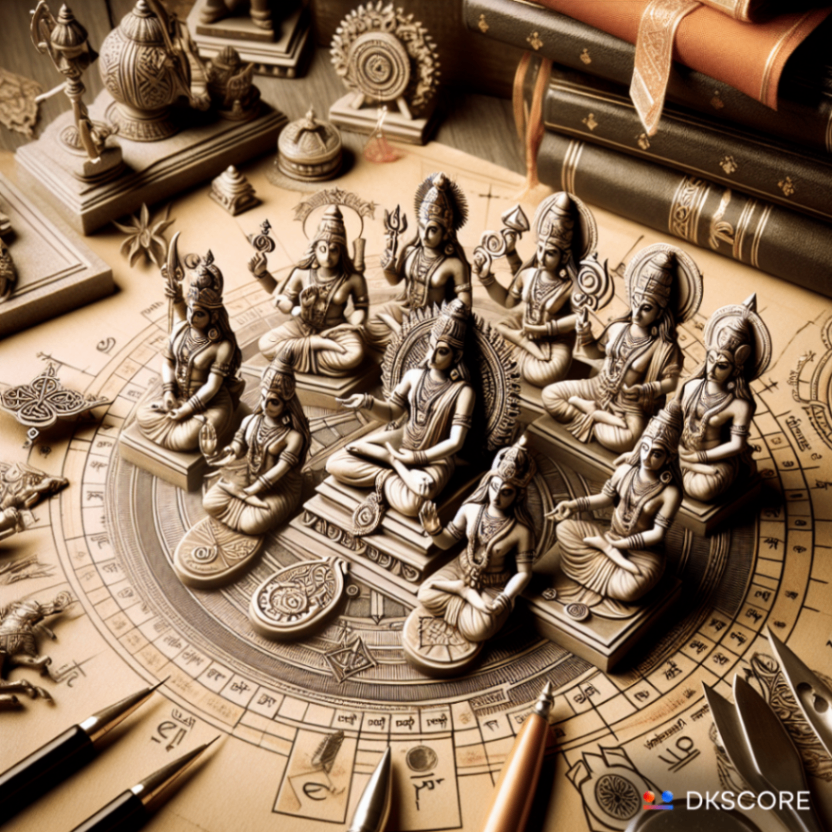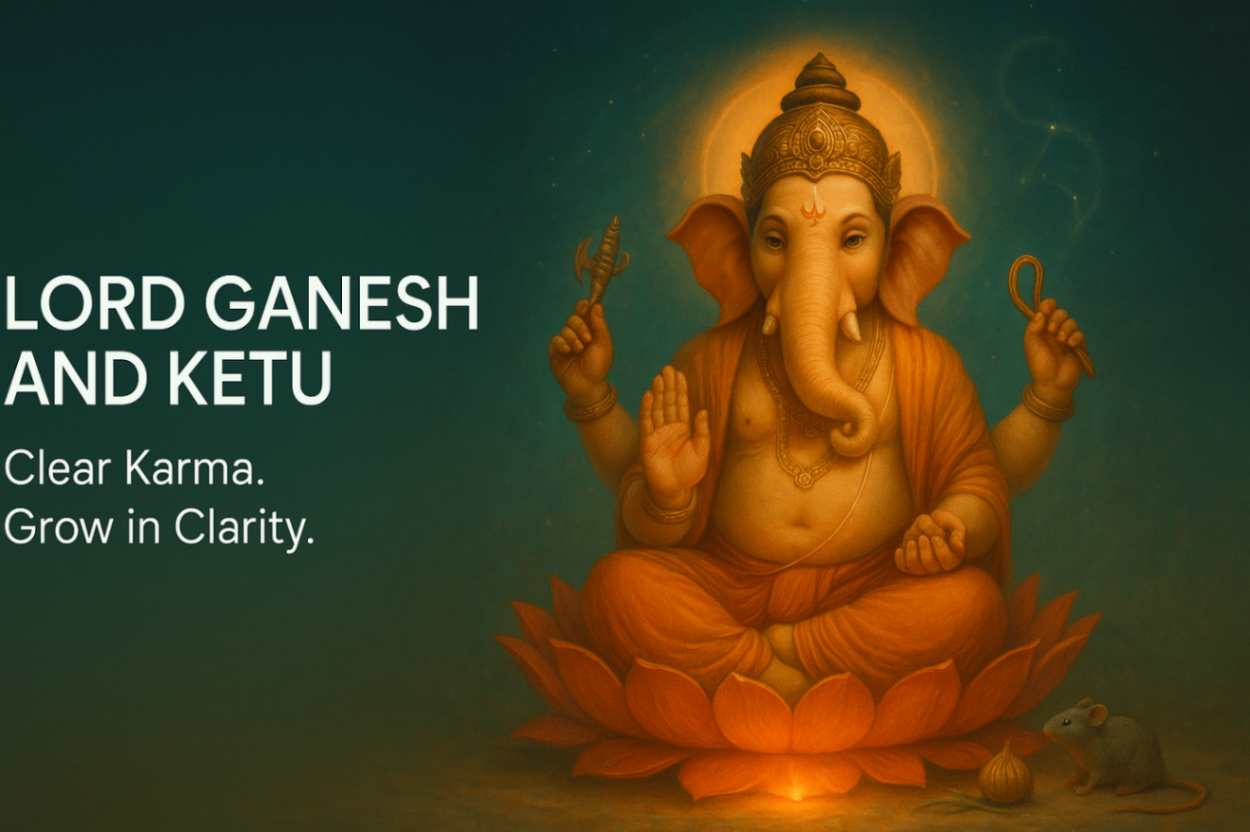Introduction to Navagraha

The concept of Navagraha in Vedic astrology is central to understanding the cosmic influences that govern human life. The term Navagraha translates to nine celestial bodies, but its meaning extends beyond just planets in the conventional sense. The Navagrahas are seen as divine entities, each exerting a unique influence on various aspects of life, from health and wealth to relationships and spirituality. These celestial bodies are not just physical planets; they include luminaries like the Sun and Moon and even the shadowy nodes, Rahu and Ketu, which represent karmic forces.
The Nine Celestial Deities (Navagraha Gods)

Each of the Navagrahas is associated with a specific deity, direction, and day of the week, with detailed Navagraha gods details provided for devotional purposes.
Surya (Sun) - The Source of Life
Deity: Surya Deva
Direction: East
Significance: Surya, the Sun god, is revered as the soul of the universe and the source of all life. He governs authority, leadership, and vitality. Worshiping Surya brings clarity, courage, and confidence.
Day: Sunday
Chandra (Moon) - The Mind and Emotions
Deity: Chandra Deva
Direction: Northwest
Significance: Chandra represents the mind, emotions, and mental well-being. He influences our moods, creativity, and emotional responses. Worshiping Chandra can enhance mental peace and emotional balance.
Day: Monday
Mangal (Mars) - The Warrior Planet
Deity: Mangala (Karttikeya)
Direction: South
Significance: Mars governs courage, strength, and protection. Mangala, as the commander of the celestial armies, provides energy and determination to overcome obstacles.
Day: Tuesday
Budh (Mercury) - The Intellectual
Deity: Budha Deva
Direction: North
Significance: Mercury, the planet of intellect and communication, is represented by Budha Deva. He is the patron of learning, wisdom, and eloquence. Worshiping Budha helps in gaining knowledge and improving communication skills.
Day: Wednesday
Brihaspati (Jupiter) - The Teacher of Gods
Deity: Brihaspati (Guru)
Direction: Northeast
Significance: Jupiter, symbolizing knowledge and spirituality, is represented by Brihaspati, the teacher of the gods. He is associated with wisdom, prosperity, and children. Worshiping Brihaspati enhances spiritual growth and wisdom.
Day: Thursday
Shukra (Venus) - The Planet of Love
Deity: Shukra Deva
Direction: Southeast
Significance: Venus, the planet of love and beauty, is symbolized by Shukra Deva, the teacher of the demons. He governs wealth, luxury, and relationships. Worshiping Shukra brings harmony, love, and material prosperity.
Day: Friday
Shani (Saturn) - The Taskmaster
Deity: Shani Deva
Direction: West
Significance: Saturn is known for its karmic influence and discipline. Shani Deva is the god of justice and karma, who ensures that everyone faces the consequences of their actions. Worshiping Shani brings patience, perseverance, and justice.
Day: Saturday
Rahu - The Shadowy Planet (North Node)
Deity: Rahu Deva
Direction: Southwest
Significance: Rahu represents worldly desires and materialism. Though not a physical planet, Rahus influence can lead to illusions and sudden changes. Worshiping Rahu helps in overcoming obstacles and achieving worldly success.
Day: Saturday (Rahu is worshiped with Shani)
Ketu - The Shadowy Planet (South Node)
Deity: Ketu Deva
Direction: Northwest
Significance: Ketu symbolizes spiritual detachment and past karma. Ketu Deva is associated with moksha (liberation) and deep spiritual insights. Worshiping Ketu helps in spiritual progress and resolving past karmic issues.
Day: Saturday (Ketu is worshiped with Shani)
Navagraha Pooja: Worship and Rituals
Performing Navagraha pooja is an essential ritual in Hindu practices, aimed at appeasing the planetary deities and seeking their blessings. This pooja can be conducted either at home or in a temple. Understanding which day is good for Navagraha pooja is crucial as each planet has a designated day that aligns with its energies.
How to Perform Navagraha Pooja at Home:
Set Up an Altar: Create a sacred space with the 9 Navagraha images or idols. Each deity should be placed in its corresponding direction.
Offerings: Light lamps, offer flowers, incense, and fruits to each deity. Recite the Navagraha Stotra or Navagraha Stotram in Telugu if you prefer.
Prayers: Chant the mantras specific to each graha, focusing on your intentions and seeking the blessings of each deity.
Aarti: Conclude the pooja with an aarti, offering light to each deity, and seek their blessings for overall well-being.
Navagraha Temples: Sacred Spaces of Worship

Navagraha temples are dedicated to the worship of these celestial deities. One of the most renowned Navagraha temples is located in Tamil Nadu, India, which is believed to have been built to honor all nine planets. Each temple is dedicated to one of the Navagrahas, and visiting these temples is considered highly auspicious, especially during significant planetary transits.
Who Built Navagraha Temple?
The Navagraha temples, especially in Tamil Nadu, were built by the Chola kings during their reign. These temples have become centers for devotees seeking relief from the malefic effects of planets.
Can We Do Navagraha Pooja at Home?

Yes, Navagraha pooja can be done at home. It’s essential to follow the rituals with devotion and understanding. Many prefer performing these rituals in temples due to the sacred environment, but a home pooja can be equally effective when done with sincerity.
How to Pray Navagraha in Temple?
When visiting a Navagraha temple, its customary to offer prayers, recite the Navagraha Stotram, and perform a circumambulation (pradakshina) around the Navagraha idols. This act is believed to mitigate the negative influences of the planets and enhance their positive effects.
The Importance of Navagraha Stotram
The Navagraha Stotram is a powerful chant dedicated to the nine planetary deities. It is believed that reciting this stotra regularly can pacify malefic planetary effects and strengthen benefic influences. This stotra is available in multiple languages, including Navagraha Stotram in Telugu, allowing devotees from different regions to connect with the divine energies of the Navagrahas.
Navagraha Positions and Directions
In Vedic astrology, understanding the Navagraha positions and directions is vital for interpreting their influences in a natal chart. Each graha has specific directional strengths and exerts its influence based on its position relative to the earth. These positions are used to predict the outcomes of various aspects of life, such as health, career, and relationships.
Conclusion
The Navagrahas are more than just celestial bodies; they are divine forces that influence our lives in profound ways. By understanding their roles, worshiping them through Navagraha pooja, and aligning our actions with their energies, we can navigate lifes challenges with greater wisdom and strength. Whether through temple visits, home rituals, or reciting the Navagraha Stotram, connecting with these cosmic influencers can bring balance, harmony, and spiritual growth.

































